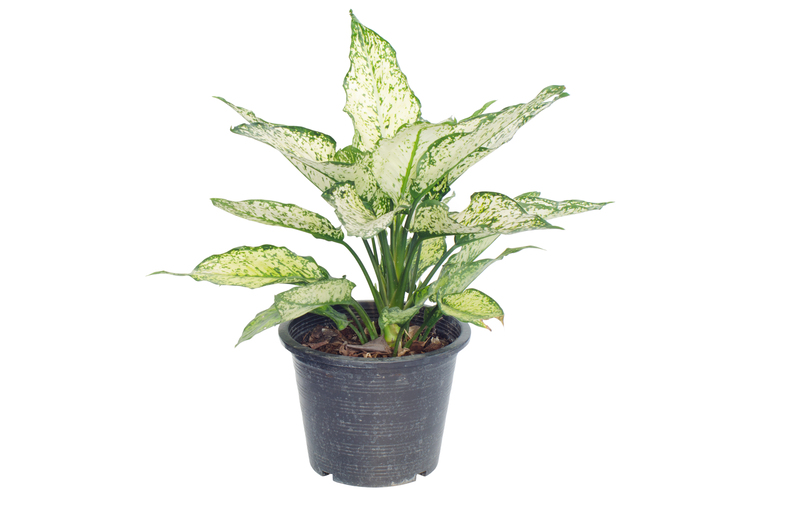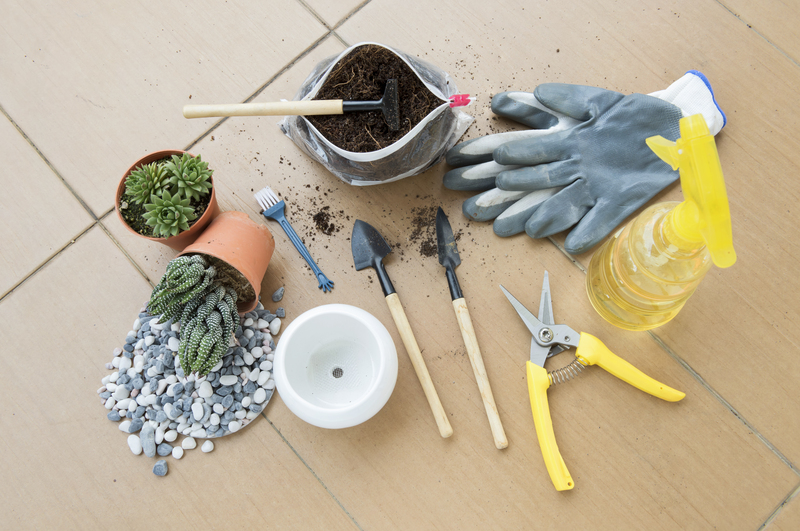Innovate your garden upwards with vertical designs
Posted on 18/08/2025
Innovate Your Garden Upwards with Vertical Designs
Are you dreaming of transforming your outdoor space, no matter how small, into a lush, green oasis? Discover how to maximize your garden's potential by adopting vertical garden designs. Vertical gardening opens up a world of creative possibilities, turning bland walls and corners into vibrant tapestries of plant life. Let's explore the art, science, and boundless benefits of innovating your garden upwards!
Why Consider Vertical Garden Designs?
Vertical gardens--also known as living walls--are a contemporary gardening solution that lets you grow plants upwards rather than outwards. This approach is perfect for:
- Urban dwellers with limited outdoor space.
- Eco-conscious homeowners wanting more greenery.
- Gardeners seeking unique landscape aesthetics.
- Anyone looking to innovate their garden upwards and maximize usable space.
Going vertical with garden design brings a range of practical, aesthetic, and environmental benefits. These include improved air quality, enhanced privacy, and even sound insulation. Read on to learn how to unlock the full potential of your garden by taking it to new heights!

How to Start: Fundamentals of Vertical Gardening
Assess Your Space and Needs
Before you begin your upwards garden transformation, evaluate the following:
- Available wall or fence space: Is there a bare exterior wall, a balcony, or a privacy fence that could become your new living wall?
- Sunlight exposure: Different plants require varying amounts of light. Choose your location wisely for the healthiest growth.
- Weight capacity: Safeguard your structures to support soil, planters, and mature plants without strain.
- Water access: Can you easily water your vertical arrangement, or might you need built-in irrigation?
Choose a Vertical Garden System
There are many innovative ways to create vertical designs, each suited for different levels of expertise and aesthetics. Consider these popular systems:
- Pocket planters: Made of fabric or felt, these can be mounted to walls and hold both soil and moisture for various plants.
- Wall-mounted shelves or grids: Organize pots, trailing plants, or even decorative objects on stacking shelves.
- Trellises and lattices: Ideal for climbing and vining plants such as peas, beans, or ivies.
- Stacked planters: Pots or containers arranged in towers to grow multiple plants vertically.
- DIY recycled designs: Get creative with pallets, old gutters, shoe organizers, or even plastic bottles.
Pick the Right Plants for Upward Innovation
Your plant selection is the heart of your vertical garden design. Different environments and goals inspire different choices:
- Herbs and Edibles: Mint, parsley, basil, strawberries, and compact tomatoes thrive in vertical planters.
- Ornamental Plants: Ferns, succulents, petunias, and trailing ivies add color and layers to your living wall.
- Climbers: Jasmine, clematis, wisteria, and passionflower naturally grow upwards, perfect for trellises.
- Shade Lovers: Heuchera, ferns, and hostas are ideal for shadier spots on your wall garden.
Tip: Mix and match for a striking, textured, and functional vertical garden design!
Advantages of Growing Your Garden Upwards
- Space efficiency: Vertical designs create more planting area even in tight spaces.
- Better air circulation: Reduces plant diseases and pests.
- Improved microclimate: Living walls can reduce heat, promote humidity, and freshen air--especially in cities.
- Urban food production: Enjoy homegrown herbs and vegetables, even without ground-level space.
- Privacy and sound insulation: A dense vertical garden acts as an attractive green screen.
- Eye-catching style: The visual impact of a lush green wall is downright stunning!
Step-by-Step: Building Your First Vertical Garden
1. Plan Your Layout
Sketch your wall or fence and decide where to place the garden structure. Factor in sunlight, water access, and how you'll reach the plants for maintenance.
2. Select Your Structure
Choose a building method (pockets, trellis, shelves, etc.) that suits your space and style. Many modular systems are readily available at garden centers, or you can opt for a fun weekend DIY project.
3. Set Up Support and Irrigation
- Mount securely: Ensure your support system can hold the weight of wet soil and mature plants.
- Install drip irrigation or ensure hand-watering is easy: Vertical gardens tend to dry quickly, especially at the top!
4. Add Quality Soil or Growth Medium
Use a lightweight but nutrient-rich potting mix. Boost with compost or slow-release fertilizer to keep plants thriving as they grow upwards.
5. Plant and Arrange
Position trailing or cascading plants at the top, compact bushy types in the middle, and trailing or groundcover types toward the bottom for a lush, full effect.
6. Maintain and Prune
- Water frequently: Vertical planters dry faster than ground beds.
- Monitor for pests: Check leaves and roots regularly.
- Trim for shape and airflow: Healthy growth requires good air circulation.
Creative Vertical Garden Design Ideas
Bring Indoors and Outdoors Together
- Living Room Green Walls: Install pockets or modular panels indoors for a striking botanical backdrop.
- Outdoor Patios: Transform fences or facades into lush walls with hearty ferns, ivies, or even succulents.
Upcycle Everyday Items Into Vertical Gardens
- Recycled Pallets: Fill with soil, line with landscape fabric, and plant herbs or flowers in the slats.
- Gutter Planters: Mount old gutters horizontally on walls and fill with shallow-rooted plants.
- Shoe Organizers: Hang a canvas organizer outdoors, fill the pockets with potting mix, and grow compact veggies or flowers.
Add Functional Flair
- Edible Walls: Integrate salad greens, small peppers, or strawberries for decor and food production.
- Privacy Screens: Use thick vines or dense plantings to create private nooks in yards or on balconies.
- Children's Play Spaces: Build a vertical "sensory wall" with scented herbs, colorful blooms, and edible treats at child height.
Best Plant Choices for Vertical Garden Designs
Here's a list of top plants that thrive in vertical systems, allowing you to truly innovate your garden upwards:
- Succulents: Tough, drought-tolerant, and available in a variety of colors and textures.
- Herbs: Basil, thyme, oregano, and mint are both beautiful and useful in the kitchen.
- Fern varieties: Boston fern, maidenhair, and bird's nest ferns prefer shadier, more humid spots.
- Ornamental grasses: Festuca, carex, and blue oat grass add vertical movement and softness.
- Tropical foliage: Philodendrons, pothos, and monstera bring a jungle vibe to your space.
- Climbing annuals: Morning glory, sweet pea, and nasturtium quickly cover trellises and grates.
Vertical Garden Maintenance Tips
- Irrigation: Regularly check for dry pockets; drip irrigation is ideal for larger systems.
- Feeding: Fertilize every few weeks with a water-soluble fertilizer for lush growth.
- Pruning: Remove dead leaves and spent blooms to encourage healthy new shoots.
- Pest management: Watch for aphids or slugs hiding in tight spots. Treat naturally whenever possible.
- Rotation: Switch out seasonal plants to refresh your display year-round.

Eco-Friendly Vertical Garden Solutions
Vertical gardening isn't just smart for your space--it's good for the planet too! Utilizing recycled materials, local plants, and water-efficient practices helps reduce your environmental footprint. A vertical garden can:
- Insulate your home naturally, keeping interiors cooler in summer and warmer in winter.
- Reduce rainwater runoff and erosion by capturing and filtering water.
- Enhance urban biodiversity, providing habitat for butterflies, bees, and birds.
By choosing vertical garden designs, you actively contribute to greener cities and healthier communities.
Conclusion: Grow Skyward--Innovate Your Garden Upwards!
Whether you're a seasoned green thumb or new to gardening, embracing vertical design is one of the most innovative ways to maximize and beautify your space.
- Small patio? Go vertical.
- Bland wall? Make it a living masterpiece.
- Dreaming of an edible garden in an apartment? Think upwards!
With careful planning, creative ideas, and the right plant choices, anyone can tap the potential of vertical garden designs. Ready to innovate your garden upwards and create your own sky-high oasis?
Start today--your living wall of wonder awaits!

